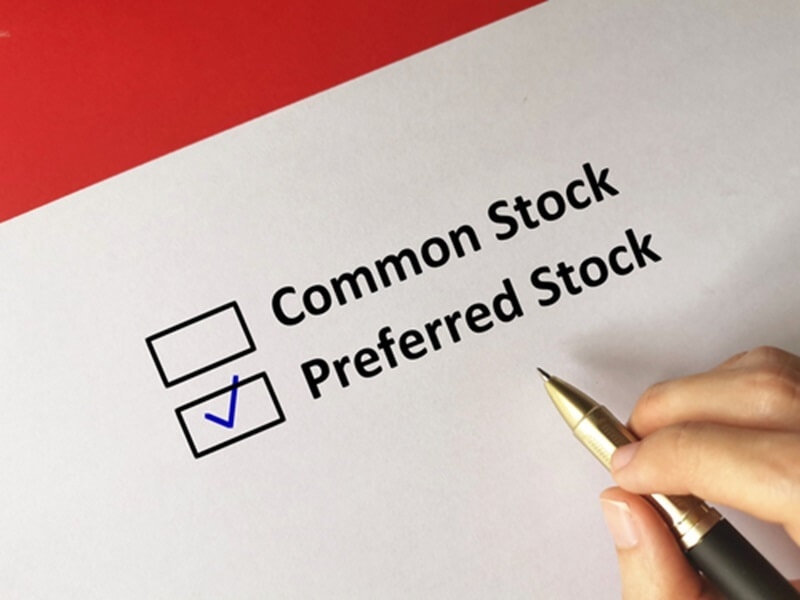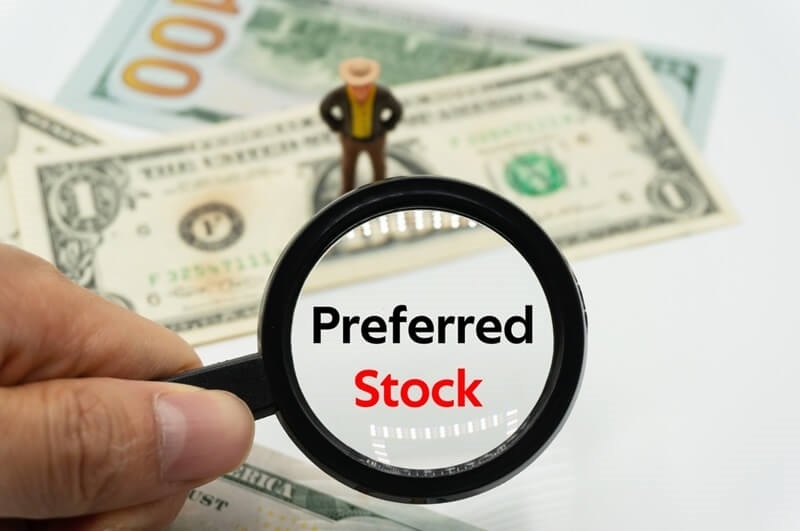Preferred Stock vs Common Stock Explained in Simple Terms

When folks talk about putting cash into stocks, they mean buying bits of a company. Not all stocks are the same, though. Mainly, there are two sorts: preferred stock and common stock. Knowing the gap is big for making wise choices in your money plans. This guide makes it easy to get the difference between preferred stock vs common stock so you can feel more sure when you step into the stock world.
What Does Owning Stock Mean?
First, let's be clear on what it means to own stock. When you buy stock, you own a bit of that company, no matter if it's common or preferred.
You turn into a shareholder, sharing in the company’s wins and risks. This big idea is at the heart of the stock types—stocks let you own part of a firm, but what you gain from it depends on the sort of stock.
What Is Common Stock?
Common stock is what most folks mean when they say they own stock in a firm. It’s the most common type of stock ownership.
Key Points About Common Stock
- Voting rights: Owners often can vote on big things like who is on the board. This idea ties back to the voting rights in stock buying.
- Dividends: These are small bits of company profits given to owners. But these pay-outs are not always there and can change.
- Chance for growth: If the firm does well and grows, your shares might go up in value.
- Last one paid: If the firm fails, common owners are the last to get any cash back.
So, while common owners might have a say in what goes on in the firm and might see growth, they also face more risk if things go bad.
What Is Preferred Stock?

Preferred stock is a different sort of stock. It’s not as seen and sits somewhere between a stock and a bond.
Key Points About Preferred Stock
- Unlike common stock, preferred stock often gives set dividend payouts.
- Unlike regular owners, preferred owners usually don't get to vote on company decisions.
- If the company goes under, preferred owners get their money back before regular owners do.
- Preferred stock prices tend to be more stable compared to common stock.
Because of these things, preferred stock is a decent choice if you want a steady income and don't care about having a say in how the company is run.
Preferred Stock vs. Common Stock: Differences
Here's an easy way to see the key ways preferred and common stock are not the same:
Dividends
- The money from common stock can vary and is not certain.
- Preferred stock often gives the same amount of money.
Voting Rights
- People with common stock usually can vote.
- People with preferred stock mostly can't.
Risk and Reward
- Common stock might be more risky, yet it could give you more money back.
- Preferred stock is mostly safer but won't give you as big gains.
Who Gets Paid First?
Preferred owners get paid before common owners if the firm goes under.
Knowing these differences can guide you in picking what fits your goals and how you feel about risk.
Stock Ownership Types Explained
When users pick between preferred and common stock, they're really picking their role in the firm. So, it’s good to have these stock types explained well.
Here’s a simple way to see it:
- Common stock is for those who want their cash to grow and want a voice in the firm.
- Preferred stock is for those who prefer steady cash and less risk.
- Your choice depends on what you value more: possible growth or sure returns.
Why Do People Pick Common Stock?
Many people choose common stock for a few reasons:
- Growth Potential: If the company does well, the price of common stock can really increase.
- Voting Rights: As a common stockholder, you get to vote and influence important decisions.
- Easy to Trade: Because common stock is so widely traded, it's simple to buy or sell.
Keep in mind that it has slightly more risk. If the company struggles or fails, common stockholders are the last in line to get their money back.
Why Do People Pick Preferred Stock?
Preferred stock draws a different kind of person:
- Steady Cash: It gives you regular dividends, so it's a firm choice for future cash.
- Less Ups and Downs: Its price doesn’t swing as much as common stock.
- Get Paid First: If the firm goes under, you're more likely to get your cash back before common stock owners.
However, knowing the risks of preferred shares is key. If rates go up, the worth of preferred stock might drop. Also, you mostly can't vote on firm stuff.
Risks With Preferred Shares
Like all choices, preferred stock has its risks too:
- Sensitive to Rates: Preferred stock acts a bit like a bond. If rates go up, the set dividend might not look so good, and the value can slip.
- Can Be Called Back: Sometimes, firms can buy back preferred shares at a set price. This caps how much you can earn.
- Growth Limits: Preferred stock prices don’t really soar, so you might miss out on big wins seen in common stock.
- No Vote: If having a say in the firm's choices is big for you, this is a downside.
These points show why it’s important to think over the risks of preferred shares before jumping in.
Which Should You Pick?
Your choice leans on what you want and how much risk you can take:
- If you like to keep up with the market and want a say in the firm, common stock might be for you.
- If you want firm cash and less risk, preferred stock might be better.
- You can mix both types. Many hold both to balance growth and income in their cash plans.
Real-Life Example
Imagine you put money into a company offering both stock types:
- You get common stock, hoping the company will boom and your share value will soar.
- You also get preferred stock for steady dividends, even if the company has a rough patch in the short term.
- Mixing these helps you stay safer when times are tough, but still lets your money grow when it’s good.
The Role of Dividend-Paying Stocks
Both common and preferred stocks can give dividends, but preferred is more reliable. That's why many pick it when they need sure money—like in retirement or shaky market times.
Still, it’s key to check the company's past with dividends. Even preferred ones can stop in hard times.
The Bottom Line on Voting Rights in Stock Investing
If being part of company choices is key for you, then having the chance to vote is a big deal.
Common stock owners often get one vote per share, using it to pick leaders or okay big plans. Preferred stock owners usually don’t get this unless the company messes up paying dividends.
How to Get Going?
If you're new to this, here are easy steps to start:
- Know your aims: Do you want long growth or steady cash?
- Check out companies: Look at how they've done financially, how they've handled dividends, and how people see them in the market.
- Spread your risks: Don’t just stick to one stock type or one company.
- Think about expert advice: A financial pro can help you choose, especially between preferred stock and common stock.
Final Thoughts
Grasping the basics of preferred stock vs common stock helps you make wiser choices in investing. Common stock brings growth and vote rights but with higher risks. Preferred stock brings steady dividends and more safety, but loses out on control and high growth options.
By learning these types well, you can match your investments to your money aims. Whether you're into dividend stocks, want voting power, or need to weigh preferred share risks, knowing the differences lets you craft a diverse and smart money plan.
This content was created by AI

